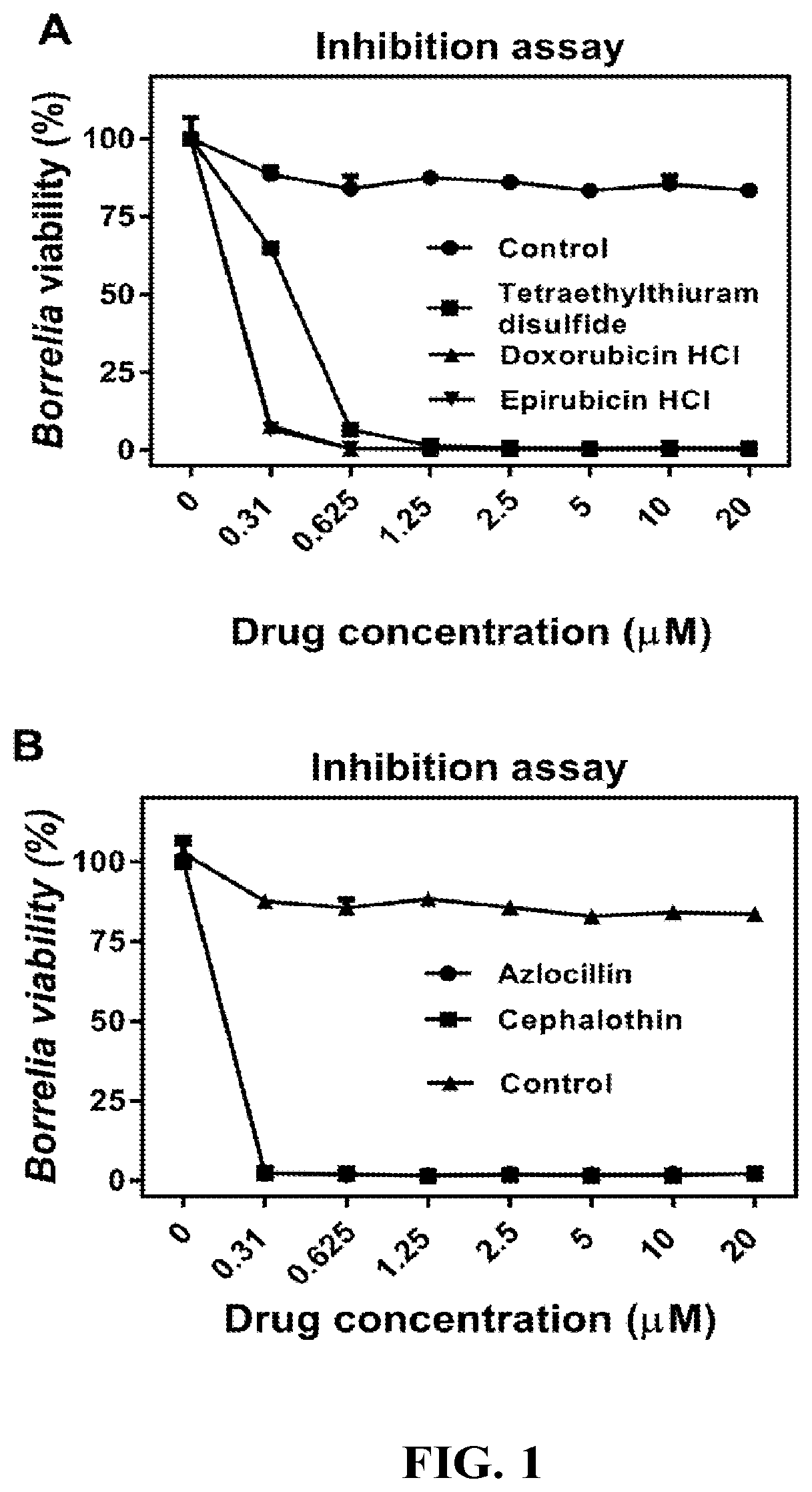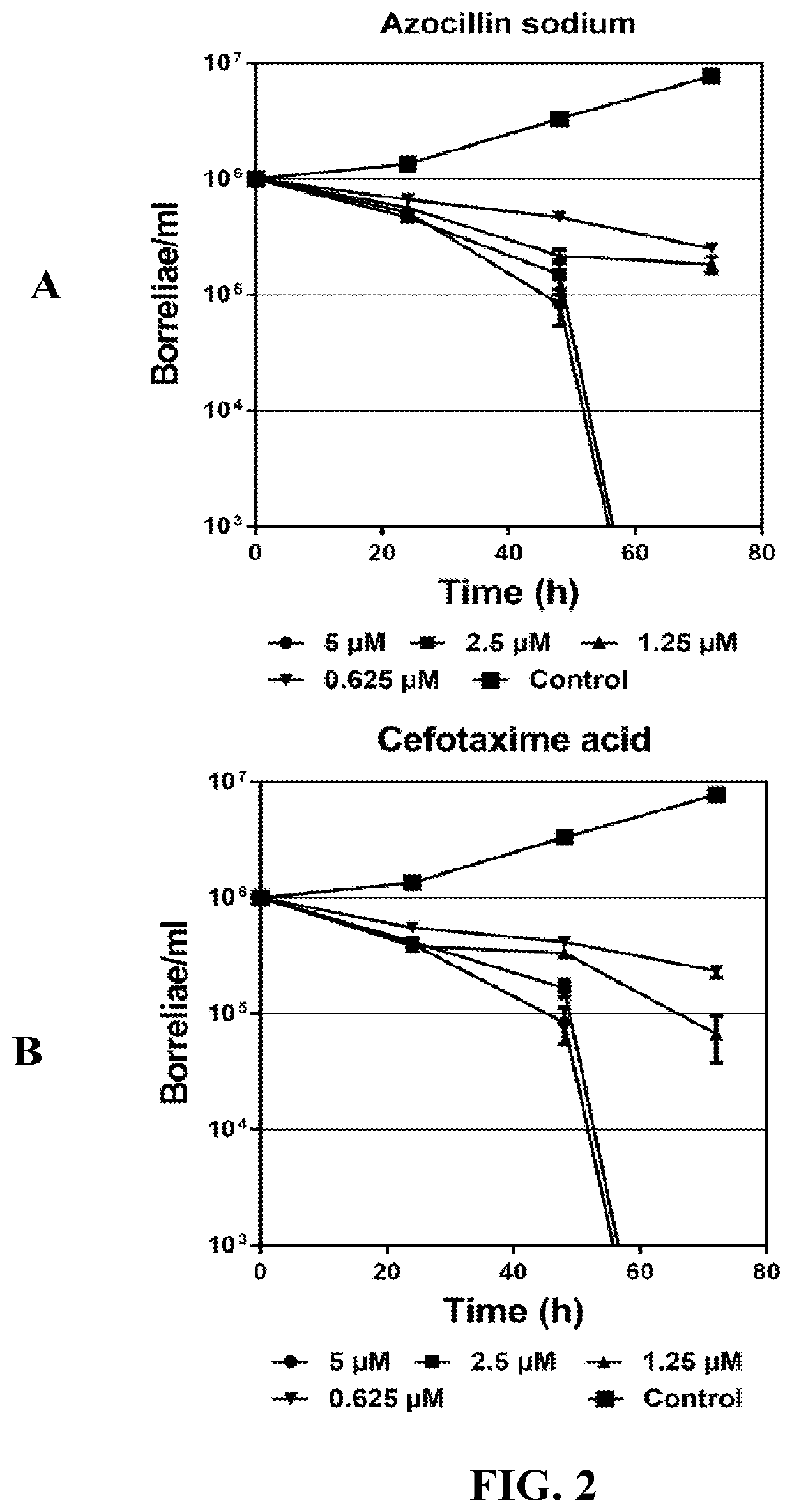Methods and drug compositions for treating lyme disease
a technology for lyme disease and compositions, applied in the field of methods and drug compositions for treating lyme disease, can solve the problem that antibiotic therapy does not fully eradicate bb
- Summary
- Abstract
- Description
- Claims
- Application Information
AI Technical Summary
Benefits of technology
Problems solved by technology
Method used
Image
Examples
example 1
ughput Primary Screening of Chemical Libraries with Bb Persisters to Identify Potent Drugs
Bacterial Strains and Culture
[0043]Bss strains CA4 and CA8 originated biologically from I. pacificus ticks, United States. These strains are infectious low passage numbers, which were cultured in Barbour-Stoenner-Kelly II (BSK-II) complete medium, with 6% rabbit serum (Sigma, St. Louis, MO, USA). The cultures were grown in sterile 50 mL Falcon tubes (Corning, N.Y., USA) and incubated at 33° C. All culture media were sterilized with 0.2 μM filter units (Millipore, Billerica, Mass., USA). The Bb cultures were grown for 7-10 days to reach the stationary phase with cell density more than 108 / ml for performing all the assays. For HTS drug screening, 7-10 day-old stationary-phase Bb cultures were transferred to 384 well culture microplates.
Drugs and Drug Libraries
[0044]All the information regarding purchase, solubility and stock solutions of drugs used in this study have been provided in the Table 1....
PUM
| Property | Measurement | Unit |
|---|---|---|
| body weight | aaaaa | aaaaa |
| time kill | aaaaa | aaaaa |
| disorder | aaaaa | aaaaa |
Abstract
Description
Claims
Application Information
 Login to View More
Login to View More - R&D
- Intellectual Property
- Life Sciences
- Materials
- Tech Scout
- Unparalleled Data Quality
- Higher Quality Content
- 60% Fewer Hallucinations
Browse by: Latest US Patents, China's latest patents, Technical Efficacy Thesaurus, Application Domain, Technology Topic, Popular Technical Reports.
© 2025 PatSnap. All rights reserved.Legal|Privacy policy|Modern Slavery Act Transparency Statement|Sitemap|About US| Contact US: help@patsnap.com



